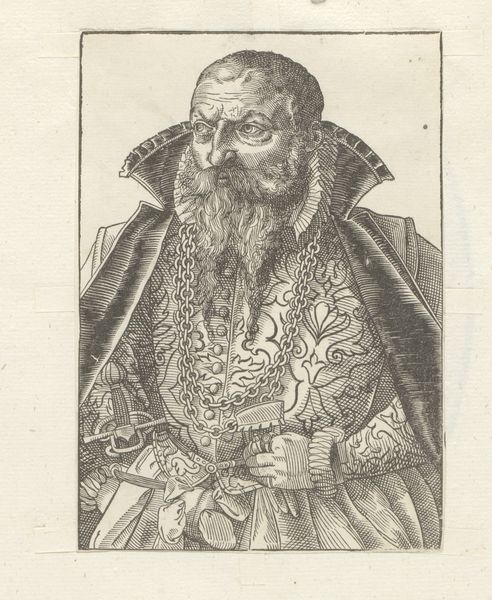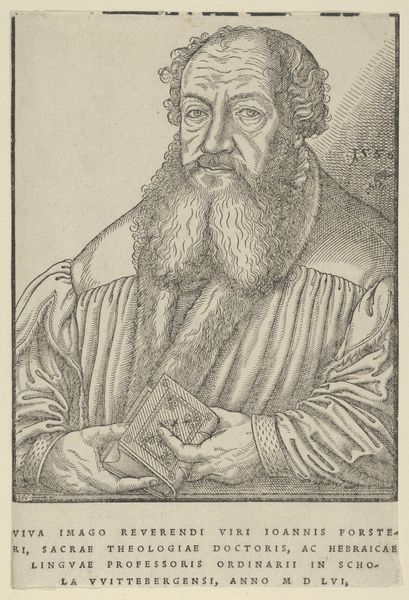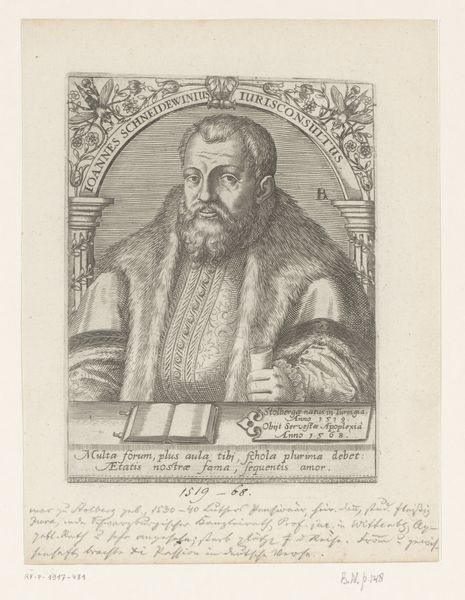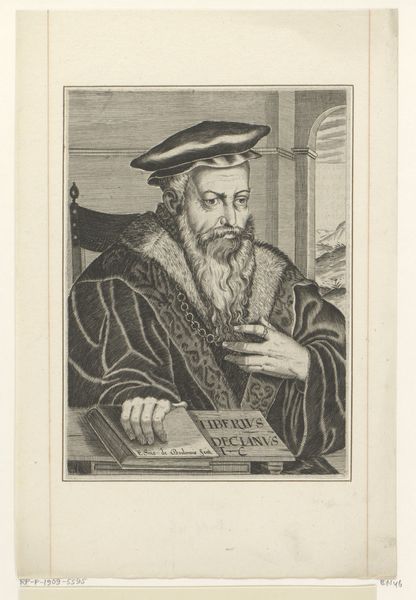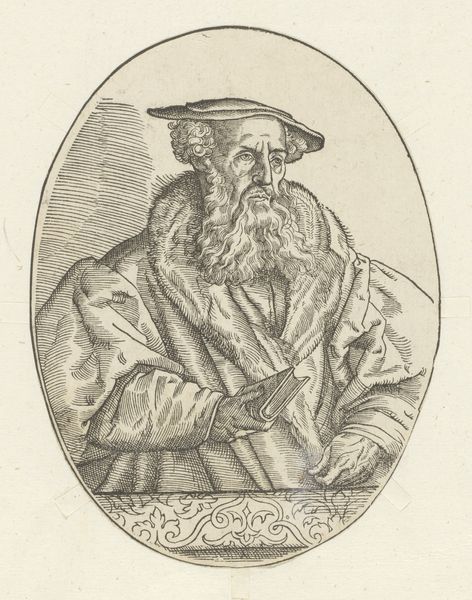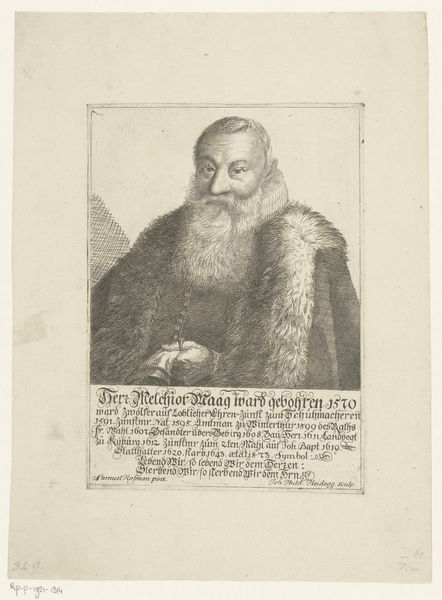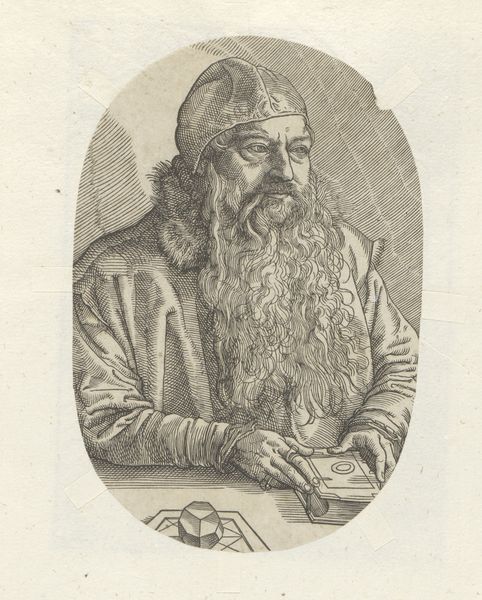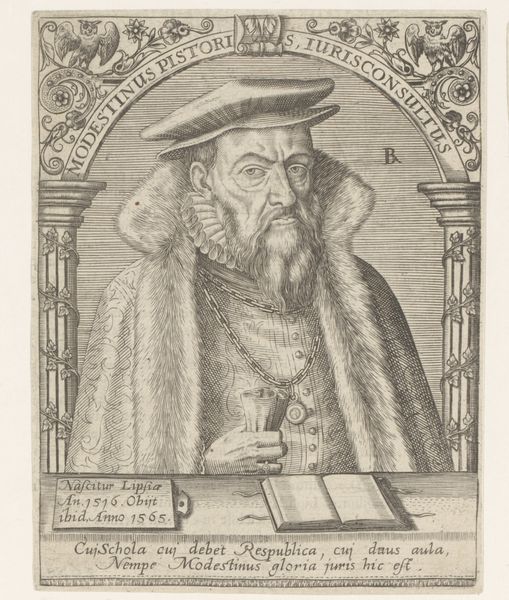
engraving
#
portrait
#
old engraving style
#
11_renaissance
#
personal sketchbook
#
portrait drawing
#
history-painting
#
engraving
Dimensions: height 178 mm, width 135 mm
Copyright: Rijks Museum: Open Domain
This portrait of an unknown man was made using woodcut, a relief printing process. The artist would have painstakingly carved away the areas of a wood block to leave a raised image, then inked the surface and pressed paper against it. The woodcut's stark contrast and linear quality are immediately apparent. Look closely at the textures achieved, from the dense fur of the sitter's coat to the intricate patterns on his sleeve. These details weren’t painted; they were meticulously cut into the wood. This would have been a labour-intensive process, demanding both technical skill and artistic vision, and the result could be reproduced many times. Consider how this method democratized image-making, making portraits and other artworks more accessible, a shift tied to broader social changes. The image hints at the man’s status, evident in his dress. Yet, it's the means of production – the woodcut – that allows his image to circulate, blurring the lines between elite and popular culture. Ultimately, understanding this print requires us to appreciate the labour and context of its making. This is a reminder that every artwork has its own history.
Comments
No comments
Be the first to comment and join the conversation on the ultimate creative platform.

